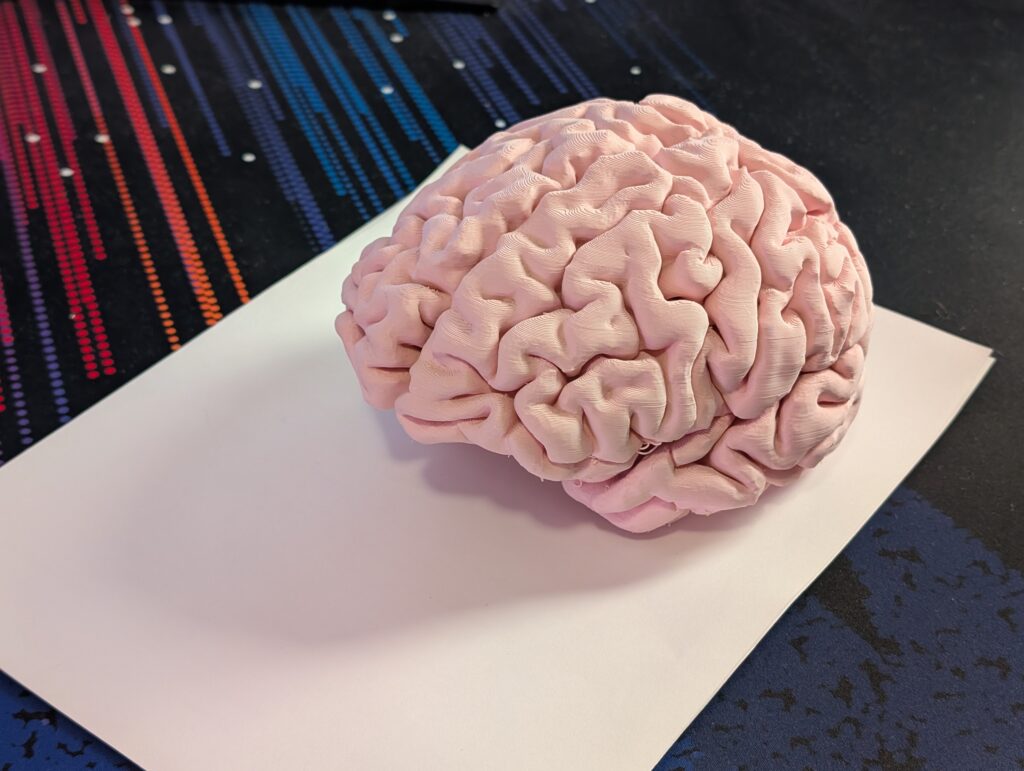3D PRINTING A LIFE-SIZE REPLICA OF MY BRAIN
Overview:
- Processed MRI DICOM files to reconstruct 3D brain anatomy using FreeSurfer command-line tools.
- Cleaned and optimized complex 3D mesh data in Blender to create a printable, refined model.
- Operated and maintained an Ender 3 Pro 3D printer, configuring slicing settings and selecting filament for large-scale prints.

When I was in the hospital getting an MRI, I couldn’t resist the urge to ask the technician for the raw image files. It was just too cool not to do a project with. So I set myself the purely scientific (and partially self-indulgent) goal of 3D printing a life-size replica of my own brain—it’s a conversation starter for sure.
The project started with an MRI scan of my head. The raw files I received were a series of 2D images, which are not very useful for my purposes (although they could make for some eerily spooky Halloween art). I used the command-line tool FreeSurfer to interpolate the MRI images, isolating just the brain matter from the skull. FreeSurfer isn’t the most user-friendly tool out there and is mostly used for medical purposes, but after some trial and error, I had the beautiful, wrinkly brain mesh exported as an STL file.
Of course, the mesh was nowhere near print-ready, so that’s where Blender came in. A mesh cleanup session in Blender took care of various rough edges and extraneous vertices. Finally ready for print, I sent the model to my Ender 3 Pro and loaded it up with bubblegum pink filament, how appetizing.
All in all, it’s equal parts neuroscience, digital sculpting, and 3D printing—plus, it makes for the weirdest paperweight you’ll ever see. If you have the files and a printer, I can’t recommend printing your own brain enough. But if you don’t happen to have an MRI scan of your own brain lying around, feel free to use mine that I’ve uploaded to Thingiverse here.